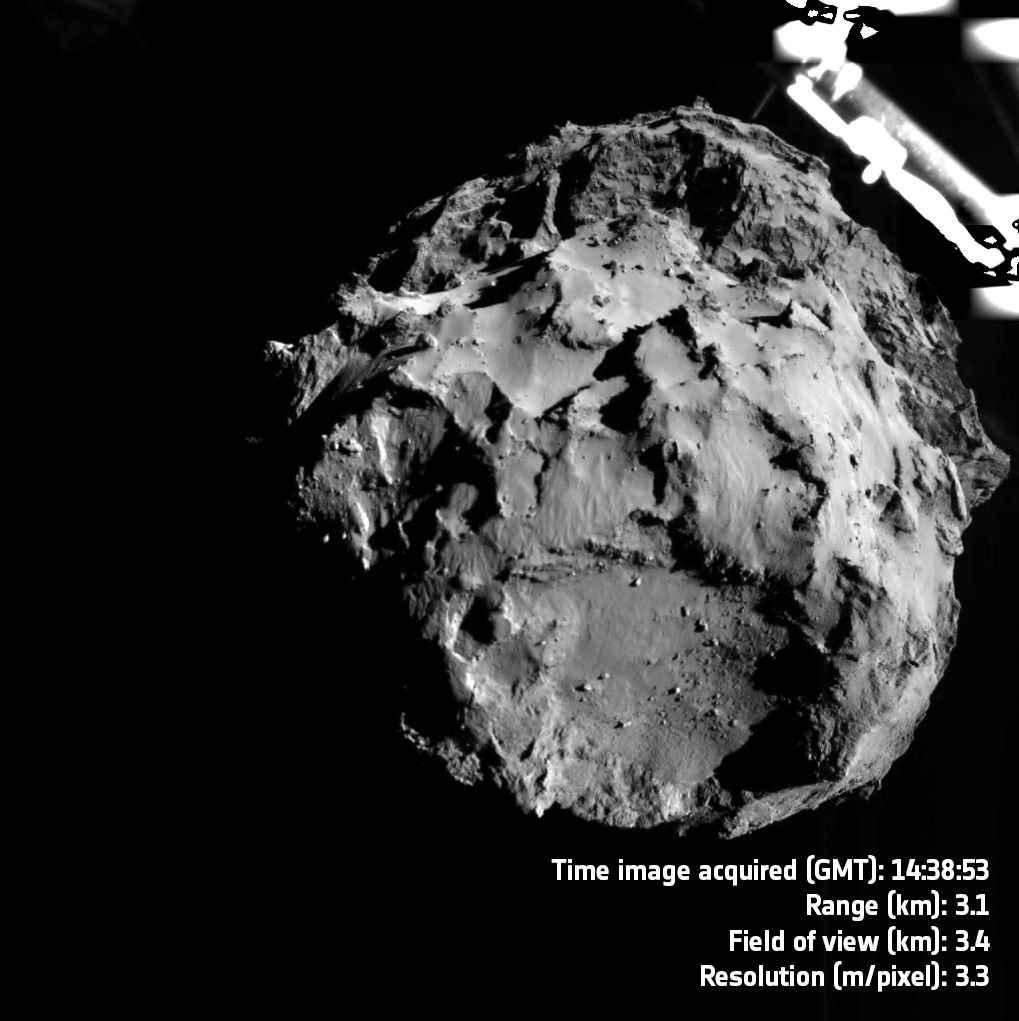18 August 2015
When a piece of aluminum foil is dropped into a test tube containing liquid bromine (Br) a powerful exothermic reaction begins. The aluminum in the test tube actually melts because of the heat and can be seen flying outwards as white-hot drops. The cloud of orange-red gas is vaporized bromine. The reaction eventually forms aluminum bromide (AlBr3).
Source: https://youtu.be/ZpQkgM0msj4
#ScienceGIF #Science #GIF #Chemistry #Reaction #ChemicalReaction #RXN #Bromine #Aluminum #AluminumBromide #Exothermic
View Original Post on Google+

14 August 2015
It’s been one month since NASA’s New Horizons spacecraft performed its flyby maneuver past the dwarf planet Pluto. This flyby animation was compiled from the currently available imagery sent back by the probe and took place between 09:35 - 13:35 on July 14, 2015. The closest approach occurred at exactly at 11:50 (as predicted).
Source: https://vimeo.com/136223988
#ScienceGIF #Science #GIF #NASA #NewHorizons #Pluto #Flyby #Spacecraft #Planet #DwarfPlanet #Spaceprobe #Images #Camera #SolarSystem #Exploration #Discovery #Space #OuterSpace
View Original Post on Google+
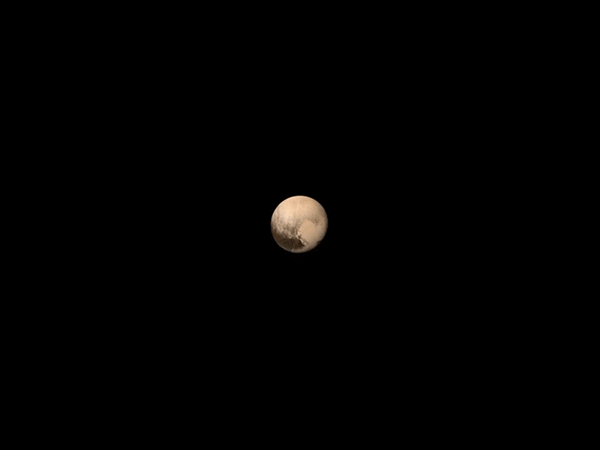
13 August 2015
A 2000-volt transformer can be used to generate large electrical arcs that ionize the surrounding air to create plasma. The electrical arc (blue) can be seen pulsing at 60Hz, which is the frequency of the alternating current used in the United States. The plasma (orange) actually allows the electrical arc to travel much further than it could through non-ionized air.
Source: https://youtu.be/htvFTahyi0Y
#ScienceGIF #Science #GIF #Electricity #Plasma #Arc #Electric #SlowMo #Frequency #AlternatingCurrent #AC #Physics
View Original Post on Google+
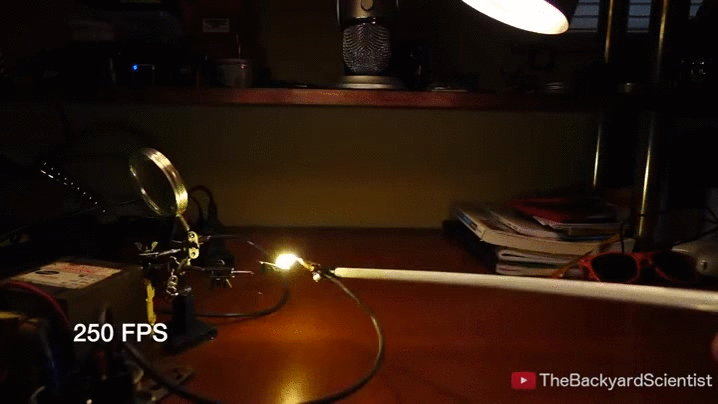
13 August 2015
The Belousov-Zhabotinsky (BZ) reaction is a classic example of non-equilibrium thermodynamics that results in a nonlinear chemical oscillator. The colors are caused by the indicator chemical ferroin that appears red when its iron atom is in the Iron (II) state and blue when in the Iron (III) state. The varying concentrations of the reactants result in regions of localized scarcity which causes the appearance of traveling waves.
Source: https://vimeo.com/132128924
#ScienceGIF #Science #GIF #Reaction #Chemical #Oscillating #Chemistry #Thermodynamics #Equilibrium
View Original Post on Google+
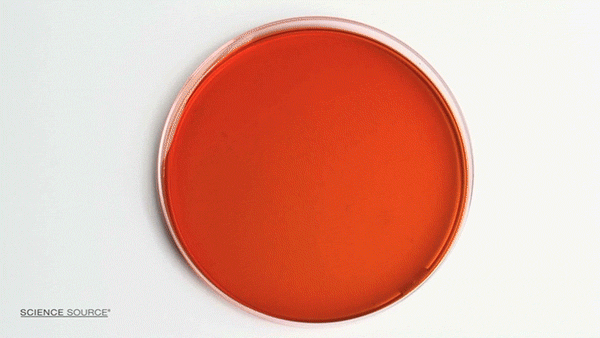
12 August 2015
The double pendulum is the posterchild of chaotic systems, so balancing a triple pendulum so easily belies the complexity of the underlying physics. The balancing act is achieved using a motorized cart regulated via a constrained feedforward controller. So while it might be difficult to predict the behavior of a triple pendulum, controlling it with a feedback loop is relatively simple.
Source: https://youtu.be/cyN-CRNrb3E
#ScienceGIF #Science #GIF #Physics #Newtonian #Mechanics #Pendulum #Controller #PID #Feedback #FeedbackLoop #Chaos #Chaotic
View Original Post on Google+
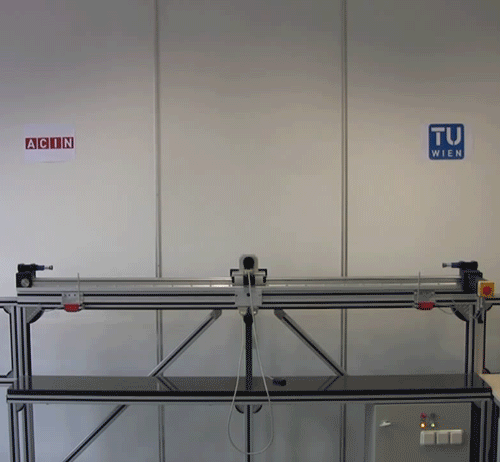
5 August 2015
Undulatus asperatus, which translates to “roughened or agitated waves,” were proposed in 2009 as the first new cloud formation classification in over 60 years. These ominous-looking clouds are common in the Plains states of the United States yet often dissipate without a thunderstorm forming. This footage was recorded in Lincoln, NE, in July 2014.
Source: https://youtu.be/Jz7BgxrVmiQ
#ScienceGIF #Science #GIF #Meteorology #Weather #Clouds #Classification #UndulatusAsperatus
View Original Post on Google+
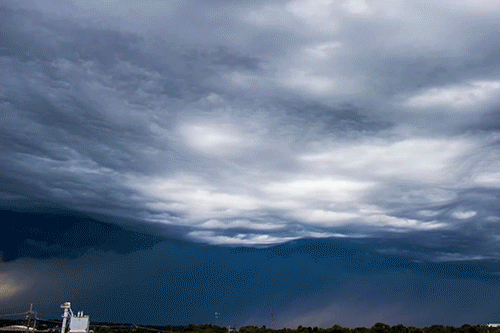
5 August 2015
This series of images taken from NASA’s Deep Space Climate Observatory (DSCOVR) depicts the Moon as it moved in front of the sunlit side of the Earth. The images were captured by the Earth Polychromatic Imaging Camera (EPIC) on board the DSCOVR satellite orbiting 1 million miles from Earth. From its position between the Sun and Earth, DSCOVR conducts its primary mission of real-time solar wind monitoring for the National Oceanic and Atmospheric Administration (NOAA).
The “natural color” images of the Earth acquired by the EPIC system are generated by combining three separate exposures (red, green, and blue) taken in quick succession. These take long enough that the Moon moves slightly between each image, resulting in the noticeable artifact along its right edge.
Source: http://www.nasa.gov/feature/goddard/from-a-million-miles-away-nasa-camera-shows-moon-crossing-face-of-earth (NASA)
#ScienceGIF #Science #GIF #Earth #Moon #Space #Satellite #DSCOVR #DeepSpaceClimateObservatory #EPIC #NASA #Imaging #NOAA
View Original Post on Google+
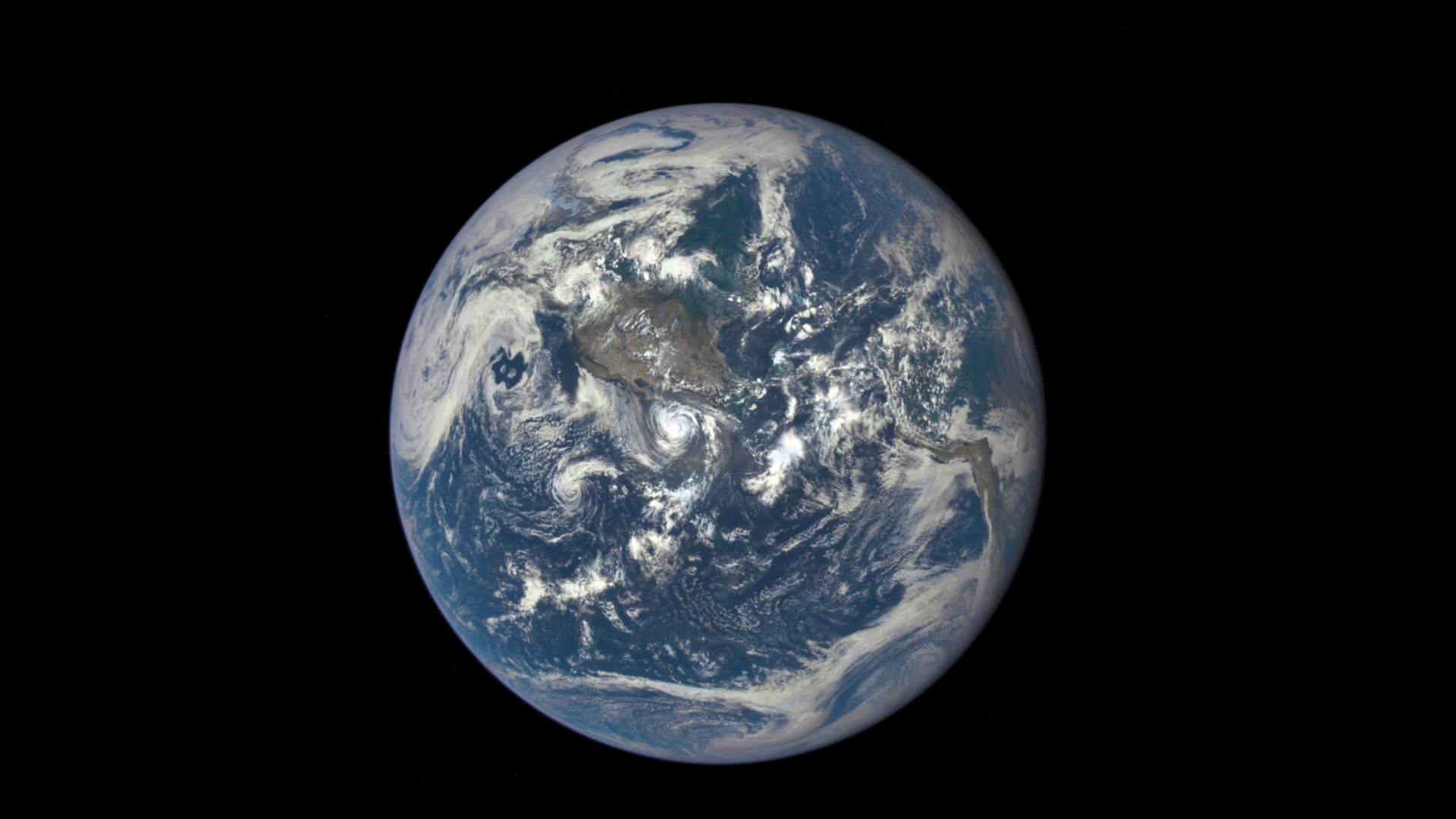
4 August 2015
When paint is mixed with gasoline, the more volatile component (gasoline) evaporates at the surface. This causes the density of the liquid to become higher near the top than at the bottom, which causes a hydrostatic instability resulting in turbulence. As the liquid flows upwards, it spreads out quickly along the surface because of the lower surface tension. This happens in many places across the surface, which results in the many different plumes.
Source: https://youtu.be/d2RdUv4Zvps
#ScienceGIF #Science #GIF #Paint #Gasoline #Gas #Marangoni #Physical #Reaction
View Original Post on Google+
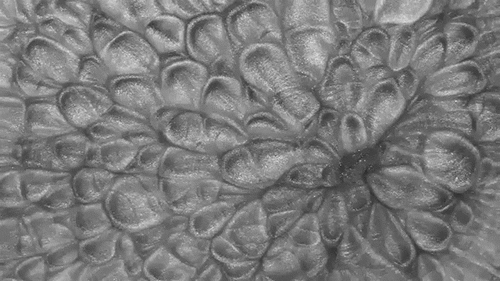
3 August 2015
A team of researchers at Harvard University have used electron microscopy and image segmentation to create a high resolution, 3D reconstruction of brain tissue. The total volume of the imaged neocortex tissue was only 1,500μm3 (smaller than a dust mite) but is packed with neurons and their various support cells. The dark green and red structures at the center of the volume are the primary dendrites of the neurons.
Source: https://youtu.be/8YM7-Od9Wr8 (Nature Video)
Paper: http://dx.doi.org/10.1016/j.cell.2015.06.054 (Cell)
#ScienceGIF #Science #GIF #Neuroscience #Neurons #Glia #Dendrite #ElectronMicroscope #Microscopy #Segmentation #Axons #Synapse #Brain #Astrocytes
View Original Post on Google+
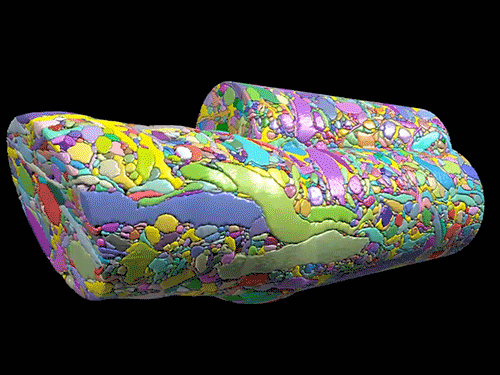
30 July 2015
On November 12, 2014, the European Space Agency’s Philae lander became the first spacecraft to successfully soft land on a comet. Despite complications with the landing that left the probe unable to utilize its solar panels for power, significant scientific discoveries were still made. Today the team published seven studies in Science covering topics such as surface firmness, the composition of the comet ‘s interior, and the discovery of organic molecules.
This animation is a compilation of descent photographs taken by the ROsetta Lander Imaging System (ROLIS) approaching the Agilkia landing site on Comet 67P/Churyumov-Gerasimenko. The final frame was taken 9m above the touchdown site.
Source: http://www.esa.int/spaceinimages/Images/2015/07/Descending_to_a_comet (ESA)
#ScienceGIF #Science #GIF #Space #ESA #Comet #Philae #Rosetta #Probe #Lander #Landing
View Original Post on Google+
